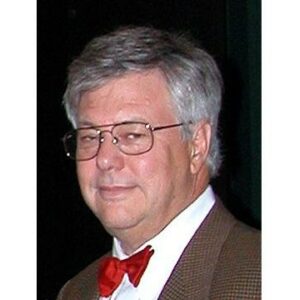Michael S. Brown is a geneticist from the United States who shared the Nobel Prize in Physiology or Medicine in 1985. He is well known for his research on cholesterol metabolism in human cells, where he collaborated with Joseph L. Goldstein and discovered that human cells had low-density lipoprotein (LDL) receptors that remove cholesterol from the bloodstream. The two then collaborated to create new cholesterol-lowering medications that are now used by millions of individuals all over the world. He graduated from the University of Pennsylvania’s College of Arts and Sciences before going on to the University of Pennsylvania School of Medicine to get his MD. Following graduation, he worked as an intern and resident in Internal Medicine at Massachusetts General Hospital in Boston for the next two years. This is when he met fellow intern Joseph L. Goldstein, with whom he developed a long-term personal bond and professional collaboration. Brown and Goldstein began studying cholesterol metabolism in humans and have since made numerous important discoveries as well as produced novel cholesterol-lowering medicines. In 1985, the duo was awarded the Nobel Prize in Physiology or Medicine for their achievements.
Childhood and Adolescence
Michael Stuart Brown was born in Brooklyn, New York, on April 13, 1941. Harvey Brown, his father, was a textile dealer, and Evelyn Brown, his mother, was a homemaker.
He went to Cheltenham High School, where he developed an interest in science as well as journalism. He got his amateur radio operating license when he was 13 years old.
In 1962, he earned a bachelor’s degree in chemistry from the University of Pennsylvania’s College of Arts and Sciences. He worked as the features editor and briefly as the editor-in-chief of the student newspaper ‘The Daily Pennsylvanian’ during his stay at the university.
He then went on to the University Of Pennsylvania School Of Medicine, where he earned his MD in 1966. He completed his internship at Massachusetts General Hospital in Boston, where he met and made friends with another intern, Joseph L. Goldstein.
A Career of Michael S. Brown
Brown became a Clinical Associate in gastrointestinal and genetic illness at the National Institutes of Health in 1968. Before joining Earl R. Stadtman’s Laboratory of Biochemistry, he worked on gastrointestinal, genetic illness, and metabolic regulatory studies.
In 1971, he joined the Department of Internal Medicine’s Gastroenterology division at the University of Texas Southwestern Medical School in Dallas. The following year, his friend Goldstein joined him.
Brown was able to partially purify and solubilize 3-hydroxy-3-methylglutaryl coenzyme A reductase, which is the rate-controlling enzyme in cholesterol production.
In 1972, he began working with Goldstein on a formal basis. Initially, the young scientists had separate laboratories, but in 1974, they merged them. Their scientific collaboration will soon yield a slew of important medical breakthroughs.
Throughout the 1970s, Brown and Goldstein studied the genetic variables that cause elevated cholesterol levels in the bloodstream. Human cells have low-density lipoprotein (LDL) receptors that collect cholesterol from the bloodstream, according to their research.
They also discovered the process of receptor-mediated endocytosis (RME), also known as clathrin-mediated endocytosis, which is a crucial element of cell biology, during their investigation. They also looked at Familial hypercholesterolemia, a genetic condition marked by high cholesterol levels.
Brown advanced through the Southwestern academic levels, becoming an Associate Professor of Internal Medicine in 1974, a professor in 1976, and the Paul J. Thomas Professor of Medicine and Genetics and Director of the Center for Genetic Disease in 1977.
In the 1980s, Brown and Goldstein continued their study and collaborated on the creation of medications that effectively reduced cholesterol levels in the blood. Brown was named Regental Professor of the University of Texas in 1985.
Brown and Goldstein identified sterol regulatory element-binding proteins (SREBPs), which regulate cholesterol and fatty acid levels in the body, in the 1990s.
Michael S. Brown, like Goldstein, continues to be actively involved in research. The two men have given several joint lectures and are among the world’s most widely quoted scientists.
Brown is a member of The Scripps Research Institute’s Board of Scientific Directors, as well as the Prix Galien USA Committee, which “recognizes the technical, scientific, and clinical research skills necessary to develop innovative medicines.”
Major Projects of Michael S. Brown
Michael S. Brown and Joseph L. Goldstein collaborated on groundbreaking research on cholesterol metabolism in the human body. They found genetic markers throughout their research and eventually assisted in the creation of statin medications containing cholesterol-lowering ingredients.
Achievements & Awards
The Louisa Gross Horwitz Prize for Biology or Biochemistry was jointly presented to Michael S. Brown and Joseph L. Goldstein in 1984.
In 1985, Brown and Goldstein were jointly awarded the Nobel Prize in Physiology or Medicine for “discoveries involving cholesterol metabolism regulation.”
He received the American Society of Human Genetics’ William Allan Award and the Albert D. Lasker Award in Basic Medical Research in 1985.
Personal History and Legacy
In 1964, he married Alice Lapin, a boyhood acquaintance. They have two daughters together.
Estimated Net Worth
As of February 23, 2022, Michael S Brown’s net worth is predicted to be at least $11 million USD. Michael Brown owns over 500 units of Regeneron Pharmaceuticals stock worth $4,367,244 and has sold REGN shares worth $5,900,228 over the previous 19 years. In addition, as an Independent Director at Regeneron Pharmaceuticals, he earns $719,993.


